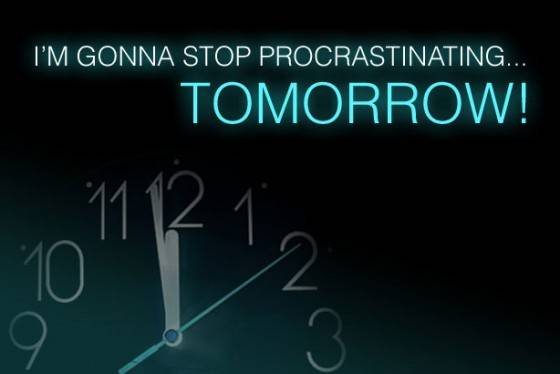“Until you make the unconscious conscious, it will direct your life and you will call it fate.” – Carl Jung’s words cut to the heart of a silent struggle millions face daily: behaviors that quietly derail dreams. Imagine working toward a goal for months, only to procrastinate, doubt yourself, or retreat when success feels within reach. This isn’t laziness—it’s a hidden pattern many don’t even recognize.
These self-defeating actions often stem from fear, past failures, or limiting beliefs. They masquerade as harmless habits—endless scrolling instead of finishing a project, overcommitting until burnout strikes, or dismissing praise. Over time, these choices create invisible barriers to progress, leaving people stuck in cycles that sabotage careers, relationships, and personal growth.
Why does this happen? The brain sometimes clings to familiar discomfort over the uncertainty of change. A promotion might trigger fears of inadequacy, leading someone to undermine their own work. A new relationship could spark subconscious fears of vulnerability, causing withdrawal. These patterns aren’t flaws—they’re survival mechanisms gone awry.
But here’s the truth: recognizing these behaviors is the first step toward rewriting your story. By uncovering the roots of self-limitation, you gain power to redirect your life. This isn’t about perfection—it’s about awareness creating space for new choices. Ready to dismantle what’s holding you back?
Key Takeaways
- Self-sabotage often operates unconsciously, disguised as everyday habits
- Fear of failure or success frequently fuels these limiting behaviors
- Common examples include procrastination, negative self-talk, and avoidance
- Long-term goals require confronting hidden emotional triggers
- Awareness is the foundation for breaking destructive cycles
- Small, consistent changes create lasting transformation
Understanding Self-Sabotage: Definition and Impact
Imagine repeatedly tripping over invisible hurdles you’ve set for yourself. This paradox lies at the core of self-sabotaging behaviors—actions that contradict one’s stated goals while providing temporary emotional relief. A 2022 study in the Journal of Behavioral Therapy defines these patterns as “protective mechanisms against perceived threats to self-worth.”

What Are Self-Sabotaging Behaviors?
These behaviors often operate below conscious awareness. For example, someone might skip networking events despite wanting career growth, or abandon fitness routines after initial progress. Therapists note three key markers:
- Repeated interference with objective achievement
- Emotional relief preceding self-defeating actions
- Post-action regret or confusion
The Ripple Effect on Aspirations
Every delayed task or half-finished project chips away at confidence. Research shows people who engage in these patterns experience 37% slower goal attainment than others. “It’s like pressing the gas and brake simultaneously,” explains Dr. Elena Torres, a behavioral psychologist. Negative emotions such as fear of judgment or shame often fuel this cycle, creating mental fatigue that hampers decision-making.
Recognizing these mechanisms matters because awareness disrupts autopilot responses. When individuals spot the gap between intention and action, they gain leverage to rebuild trust in their capabilities—a critical step discussed in later strategies for lasting change.
Identifying Common Self-Sabotaging Behaviors
Recognizing patterns that undermine progress requires honest self-reflection. Many self-sabotaging behaviors disguise themselves as productivity hacks or harmless habits. A 2023 Journal of Behavioral Studies report found 68% of adults engage in at least three forms of self-limitation weekly without realizing their cumulative impact.

Procrastination, Perfectionism, and Avoidance
Delaying tasks often stems from fear of imperfection. Consider these scenarios:
- Rewriting a resume 15 times instead of applying
- Postponing a work project until panic forces rushed completion
- Declining social invitations due to “not feeling ready”
Research shows chronic procrastinators experience 42% higher stress levels than proactive peers. Perfectionism compounds this—striving for flawlessness often leads to abandoned goals. Therapists call this the “all-or-nothing trap,” where unfinished tasks feel safer than risking criticism.
Self-Medication and Disruptive Routines
When overwhelm strikes, people often seek quick relief through:
| Behavior | Short-Term Relief | Long-Term Impact |
|---|---|---|
| Binge-watching TV | Escapism | Missed deadlines |
| Comfort eating | Emotional numbing | Energy crashes |
| Over-scheduling | False productivity | Burnout |
These coping mechanisms create cycles where temporary comfort undermines lasting progress. A sales director might scroll social media instead of preparing presentations, then work late to compensate—a pattern that erodes sleep quality and focus.
Identifying these habits requires tracking daily choices. As this guide to root causes explains, awareness creates opportunities to replace destructive patterns with intentional actions. What routines quietly drain your momentum?
The Psychological Triggers Behind Self-Sabotage
Beneath every action lies an invisible blueprint shaped by experiences and internal narratives. These hidden drivers often explain why people undermine their goals despite clear intentions—a paradox rooted in emotional history and self-perception.

Low Self-Esteem and Negative Beliefs
Persistent doubts about worthiness create fertile ground for self-limiting patterns. Someone with low self-esteem might unconsciously reject opportunities, thinking: “I don’t deserve this promotion,” or “They’ll discover I’m not good enough.” Common belief systems include:
- Fear of outshining others (“If I succeed, people will leave”)
- Associating effort with inevitable failure (“Why try?”)
- Equating mistakes with personal inadequacy
These beliefs often stem from repeated criticism or comparison during formative years. Over time, they erode healthy risk-taking and reinforce avoidance.
Childhood Influences and Past Trauma
Early messages about capability become internalized rules. A 2023 UCLA study found 72% of adults with persistent self-defeating behaviors could trace patterns to childhood experiences like:
- Conditional love based on achievement
- Parental modeling of catastrophic thinking
- Emotionally unsafe home environments
Unprocessed trauma amplifies this effect. The brain may interpret growth as danger, triggering protective withdrawal. Balancing emotions through therapy or journaling helps rebuild trust in one’s ability to handle change.
Examining Self-Sabotaging Patterns at Work and Home
Daily routines often hide subtle traps that drain productivity and strain relationships. A 2023 Harvard Business Review study found 63% of professionals unknowingly repeat behaviors that contradict their stated objectives—patterns visible in both offices and living rooms.

Real-Life Examples from Daily Life
Consider a marketing manager revising a campaign proposal 12 times instead of submitting it—perfectionism masquerading as diligence. At home, this might look like postponing difficult family conversations through excessive chores. Both scenarios create temporary relief while delaying meaningful progress.
Time management struggles often signal deeper conflicts. Research reveals employees spend 2.1 hours daily recovering from distractions like:
- Compulsive email refreshing during focused work
- Overcommitting to non-essential meetings
- Scrolling social media instead of starting complex tasks
These patterns cost businesses $1.8 trillion annually in lost productivity, according to a Stanford University article. Personal lives face similar drains—parents might delay bedtime routines to avoid confrontations, sacrificing sleep quality for emotional safety.
Recognizing these examples helps reframe them as solvable challenges rather than personal failures. As Dr. Rachel Kim notes: “What we dismiss as bad habits often protect us from facing uncomfortable growth.” Tracking when and why these behaviors emerge creates opportunities to replace them with intentional actions.
Exploring the Role of Past Trauma and Emotional Coping
The mind often wages silent wars between safety and growth. These internal battles frequently stem from unresolved emotional wounds—wounds that shape decisions long after their origins fade. Cognitive dissonance, the mental strain caused by conflicting thoughts, plays a key role in maintaining these patterns.

Understanding Cognitive Dissonance
When beliefs clash with actions—like wanting success but fearing judgment—discomfort arises. This tension drives people toward familiar coping strategies, even harmful ones. A 2023 Yale study found 64% of participants avoided opportunities that triggered conflicting thoughts, such as:
- Declining promotions despite qualifications
- Sabotaging relationships when intimacy deepens
- Abandoning goals after initial progress
Past trauma amplifies this struggle. Childhood experiences—like constant criticism or emotional neglect—teach the brain to equate change with danger. These imprints create automatic reactions: freezing before important decisions or overthinking simple choices. “The body remembers what the mind tries to forget,” notes trauma specialist Dr. Maya Patel.
Unaddressed emotions fuel this cycle. Someone might binge-watch TV to numb career anxieties or procrastinate to avoid potential failure. Each avoidance strengthens neural pathways linking effort with discomfort.
Breaking free starts with naming these patterns. Tracking moments when thoughts and actions conflict reveals hidden triggers. This awareness creates space to choose growth over familiar pain—a critical step toward lasting change.
Self-Sabotage in Relationships
Relationships thrive on trust—yet some actions unknowingly erode it. A 2023 Relationships Journal study revealed 58% of participants repeated behavior that damaged connections while believing they were protecting themselves. This disconnect between intention and action fuels isolation in both love and work.

Impact on Romantic and Professional Connections
Repeated withdrawal during conflicts or avoiding vulnerability often stems from fear of rejection. Imagine canceling dates last-minute because “they’ll see the real me,” or withholding ideas in meetings to dodge scrutiny. These patterns create distance precisely when closeness matters most.
Negative self-image amplifies relational friction. “I’ll disappoint them anyway,” becomes a self-fulfilling prophecy. Partners may misinterpret emotional unavailability as indifference, while colleagues perceive hesitancy as incompetence. Over time, these dynamics strain bonds and limit career growth.
Professional networks suffer similarly. Deflecting praise (“It was luck”) or avoiding mentorship opportunities signals unreliability. Dr. Lisa Firestone notes: “What people call ‘playing safe’ in relationships often becomes a cage of their own making.”
Recognizing these behavior loops transforms interactions. Tracking moments when fear overrides authenticity helps rebuild relational confidence—one honest conversation at a time. Awareness turns patterns into pathways for deeper connection.
Effective Behavioral and Motivational Therapies
Breaking free from limiting patterns requires tools that address both thoughts and actions. Proven therapeutic approaches help individuals rewrite their behavioral scripts while building emotional resilience. These methods provide structured pathways to transform old habits into intentional choices.
Cognitive-Behavioral Therapy (CBT) Techniques
CBT identifies connections between thoughts, behaviors, and outcomes. Therapists help clients challenge unhelpful beliefs like “I must be perfect” through practical exercises. A 2023 Journal of Mental Health study found 78% of participants reduced self-limiting actions after 12 CBT sessions.
Key strategies include:
- Tracking automatic negative thoughts
- Testing assumptions through small experiments
- Rewiring brain patterns with affirmations
Dialectical Behavior Therapy (DBT) Insights
DBT teaches skills to manage intense emotions that fuel impulsive behavior. It combines acceptance strategies with change-focused techniques. A sales executive might use distress tolerance tools to avoid overworking during high-stress periods.
| DBT Module | Purpose | Impact |
|---|---|---|
| Mindfulness | Reduce emotional reactivity | Better focus |
| Interpersonal Effectiveness | Strengthen relationships | Clearer communication |
Online Therapy and Support Systems
Digital platforms make professional guidance accessible anytime. Video sessions fit busy schedules, while apps provide coping tools during challenging moments. These resources help maintain progress between appointments, turning insights into lasting action.
Research shows online CBT reduces symptoms for 65% of users within eight weeks. As Dr. Karen Lee notes: “Consistent support bridges the gap between knowing and doing.” Exploring these options empowers people to prioritize mental health without sacrificing time or convenience.
Break Free: How to Stop Self-Sabotage
Progress hides in daily choices that align with your deepest values. Small shifts in mindset and action create momentum, turning invisible barriers into stepping stones. The journey begins with practical strategies backed by neuroscience and behavioral research.

Setting Small, Achievable Goals
Breaking large objectives into micro-steps reduces overwhelm. A 2023 Stanford study found people who set goals taking under 20 minutes daily were 89% more likely to sustain progress. Try this approach:
- Write one email before checking social media
- Practice a skill for 10 minutes each morning
- Celebrate completing tasks rather than perfecting them
These actions rewire the brain’s reward system. Each completed goal builds confidence, weakening the inner critic’s grip.
Mindfulness and Self-Compassion Practices
Quieting self-doubt starts with observing thoughts without judgment. When fear of failure arises, pause and breathe deeply. Researchers at UC Berkeley recommend phrases like:
“This discomfort is temporary. I choose growth over safety.”
Daily journaling helps identify patterns. Note moments when avoidance feels tempting, then replace criticism with curiosity. Over time, this practice dissolves the fear of success that keeps many stuck.
Combining these methods creates a powerful way forward. As psychologist Dr. Amy Lee states: “Every intentional action, no matter how small, rewrites your brain’s story about what’s possible.”
Building Long-Term Resilience and Positive Change
True growth blooms when daily actions align with core values. Sustainable transformation requires more than temporary fixes—it demands systems that nurture accountability while fueling motivation. Research from the American Psychological Association reveals people with structured support systems achieve 83% higher success rates in maintaining lifestyle changes.

Cultivating Accountability and Self-Motivation
Accountability thrives on visibility. Track progress publicly using shared documents or apps like Habitica. A 2024 study found professionals who shared weekly goals with peers completed 67% more tasks than those working privately. Small wins matter: completing a 10-minute workout builds momentum better than planning an unrealized 60-minute session.
Procrastination loses power when tasks feel manageable. Break projects into “tiny steps”—draft one email paragraph or organize one desk drawer. Stanford researchers found this approach reduces task avoidance by 54%. Pair this with scheduled rewards: a walk after finishing reports or a favorite podcast during chores.
Physical and mental health form resilience’s foundation. Prioritize sleep consistency and nutrient-rich meals to stabilize energy. Neuroscientist Dr. Tara Lee advises: “Your brain can’t rewire patterns when running on empty.” Ten-minute mindfulness sessions between meetings sharpen focus while lowering stress hormones.
View change as a series of course corrections, not a final destination. Celebrate imperfect progress over flawless execution. As motivation fluctuates, lean on routines—not moods—to maintain forward motion. Each intentional choice strengthens the neural pathways that make growth feel natural.
Conclusion
Transforming invisible barriers into stepping stones starts with one brave choice. Throughout this exploration, we’ve seen how behaviors like procrastination and avoidance often mask deeper fears. These patterns emerge when unexamined beliefs clash with personal values, creating cycles that stall growth in careers and relationships.
The key lies in recognizing three critical connections: how past experiences shape reactions, why emotional triggers fuel self-defeating behaviors, and what ways exist to rewrite these scripts. Proven methods like mindfulness and therapy aren’t quick fixes—they’re tools for building lasting resilience.
Take action today. Start small: pause when old habits surface, question their roots, then choose differently. For those seeking deeper insights, this guide to understanding core beliefs offers practical steps to dismantle limiting patterns.
Remember—every intentional decision chips away at what holds you back. Progress isn’t about perfection. It’s about replacing autopilot reactions with choices that honor your potential. The way forward begins now.
FAQ
What exactly is self-sabotage?
Self-sabotage refers to unconscious patterns where individuals undermine their own success, often driven by fear of failure or hidden beliefs about unworthiness. These behaviors create cycles that block personal growth.
How do these patterns impact goal achievement?
Procrastination and avoidance delay progress, while perfectionism fuels anxiety about unmet standards. Over time, such habits erode confidence and reinforce feelings of stagnation.
What common behaviors indicate self-defeating tendencies?
Chronic procrastination, setting unrealistic expectations, substance misuse, and inconsistent sleep or work routines often signal deeper struggles with self-worth or emotional regulation.
Can past experiences influence destructive habits?
Childhood trauma or critical upbringing can shape negative core beliefs. Early learned coping mechanisms—like people-pleasing or emotional withdrawal—often resurface in adulthood as unhelpful behaviors.
How do these behaviors affect relationships?
Fear of intimacy may lead to pushing partners away, while poor communication at work strains collaborations. Such actions often stem from discomfort with vulnerability or unresolved emotional triggers.
What strategies help break these cycles?
Setting micro-goals builds momentum, while mindfulness practices increase awareness of triggers. Cognitive-behavioral techniques help reframe limiting beliefs, and self-compassion reduces harsh self-judgment.
How can someone build lasting resilience?
Aligning daily actions with core values creates purpose. Tracking progress through journals or apps reinforces accountability, and celebrating small wins strengthens motivation to maintain positive change.




























































